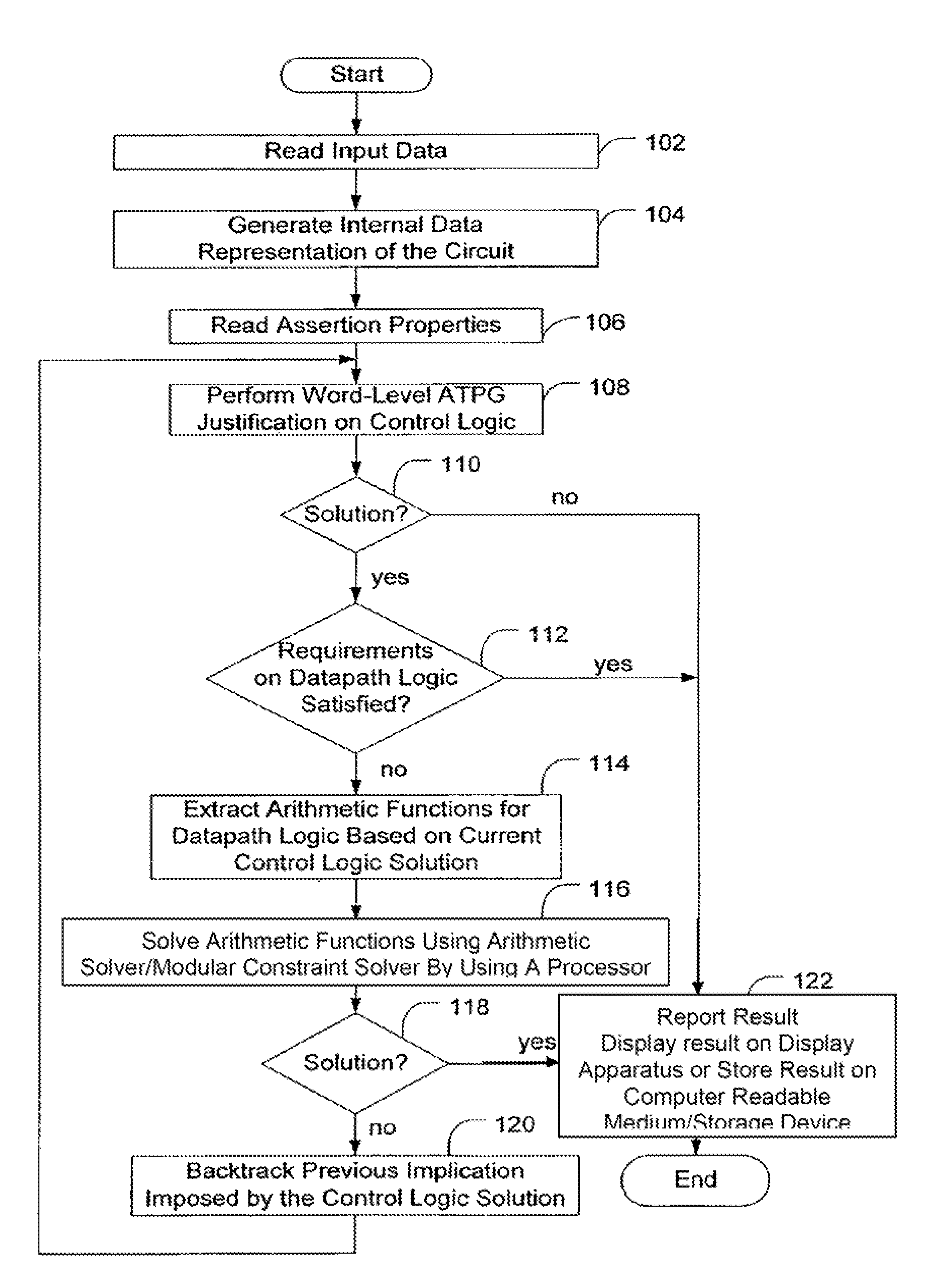Solving constraint satisfiability problem for automatic generation of design verification vectors
a technology of constraint satisfiability and automatic generation, applied in the field of functional verification of circuit designs, can solve the problems of expensive re-spin of the design process, manual generation of verification vectors by designers, and the most time-consuming component of verification
- Summary
- Abstract
- Description
- Claims
- Application Information
AI Technical Summary
Benefits of technology
Problems solved by technology
Method used
Image
Examples
example
[0121]The detailed procedure of the linear constraint-solving algorithm is illustrated using the following linear circuit example:
[0122]
[0123]Assume all the signal buses of the above linear circuit example are 4-bits wide and the initial assignments for output x=2 and y=10 are given. The linear constraints can be expressed as an integer matrix equation:
[0124][3-10-212-20]·[abcd]=[210]
Modulating the coefficients by 16 (24) produces:
[0125][31501412140]·[abcd]=[210]
[0126]First, a (series of) row operation(s) is performed to upper-trianglize the matrix; that is, make its lower-left element(s) 0. Here, the first row of the above example is multiplied by the multiplicative inverse of its first element (i.e., multiplicative_inverse(3)=11) and subtracted from the second row. The equation then becomes:
[0127][315014013146]·[abcd]=[24]
[0128]The partial solution for the last nonzero row is then solved. To obtain a particular solution for a single-row equation, a check to determine if the greate...
PUM
 Login to View More
Login to View More Abstract
Description
Claims
Application Information
 Login to View More
Login to View More - R&D
- Intellectual Property
- Life Sciences
- Materials
- Tech Scout
- Unparalleled Data Quality
- Higher Quality Content
- 60% Fewer Hallucinations
Browse by: Latest US Patents, China's latest patents, Technical Efficacy Thesaurus, Application Domain, Technology Topic, Popular Technical Reports.
© 2025 PatSnap. All rights reserved.Legal|Privacy policy|Modern Slavery Act Transparency Statement|Sitemap|About US| Contact US: help@patsnap.com



